A Tibetan Fire Steel ‘Chakmak’ Belt Hung Tinder Pouche
A Tibetan Fire Steel ‘Chakmak’ Belt Hung Tinder Pouche the leather set with decorative panels of silver copper and brass and red coral with attached steel striker
Together with a Tibetan belt hung Coin Pouch decorated with panels of chased silver and brass inset with green turquoise
19th Century
Sizes: A: 30cm high, 14cm wide - 11¾ ins high, 5½ ins wide
B: 25cm high, 13.5cm wide - 10 ins high, 5¼ ins wide
Together with a Tibetan belt hung Coin Pouch decorated with panels of chased silver and brass inset with green turquoise
19th Century
Sizes: A: 30cm high, 14cm wide - 11¾ ins high, 5½ ins wide
B: 25cm high, 13.5cm wide - 10 ins high, 5¼ ins wide
In the 1820’s William Moorcroft travelled extensively in the Himalayan regions and in describing Tibetan dress he noted ‘Every man carries a knife hanging from his girdle and a chakmak or steel for striking a light’. Constructed from a stiff leather purse with a curved steel striker attached by rivets, the sides and flap are sewn and fixed by ornamental silver and brass plates, and small decorative plaques. Inside are kept a piece of flint and some tinder such as dried plant roots. To the top a metal plate allows the pouch to be hung from the belt with a ‘chakmak’ strap.
With the introduction of the friction match the function of the tinder box and pouch gradually became redundant, but the Tibetans and Mongolians still wore them and regarded them as amuletic jewellery and an essential part of their traditional dress.
With the introduction of the friction match the function of the tinder box and pouch gradually became redundant, but the Tibetans and Mongolians still wore them and regarded them as amuletic jewellery and an essential part of their traditional dress.
A Tibetan Fire Steel ‘Chakmak’ Belt Hung Tinder Pouche
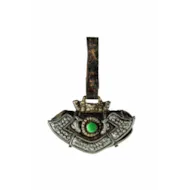
SOLD
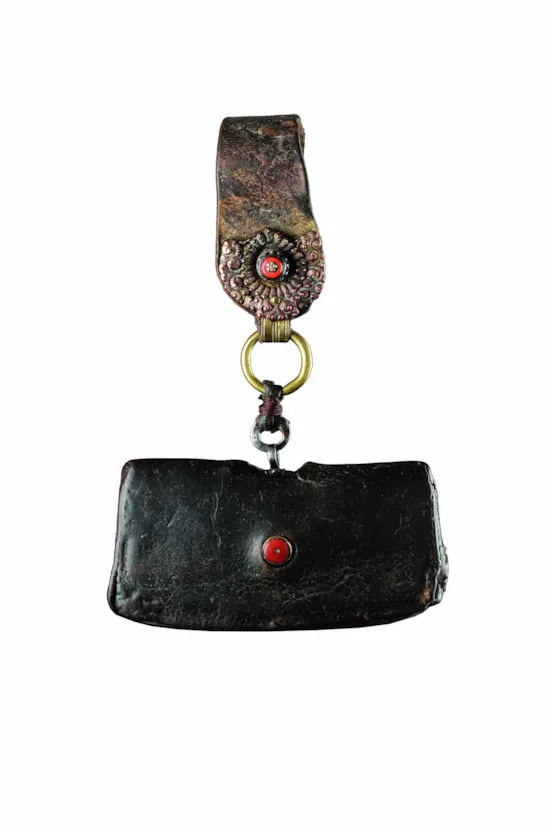
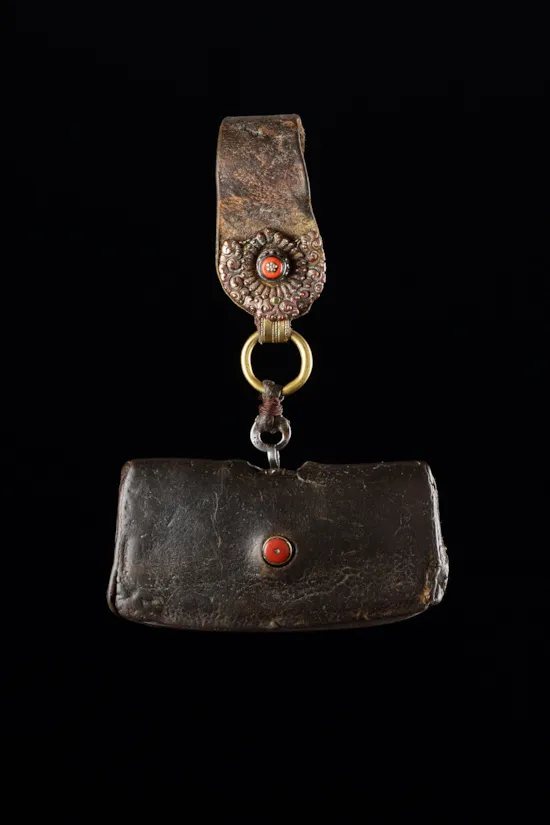
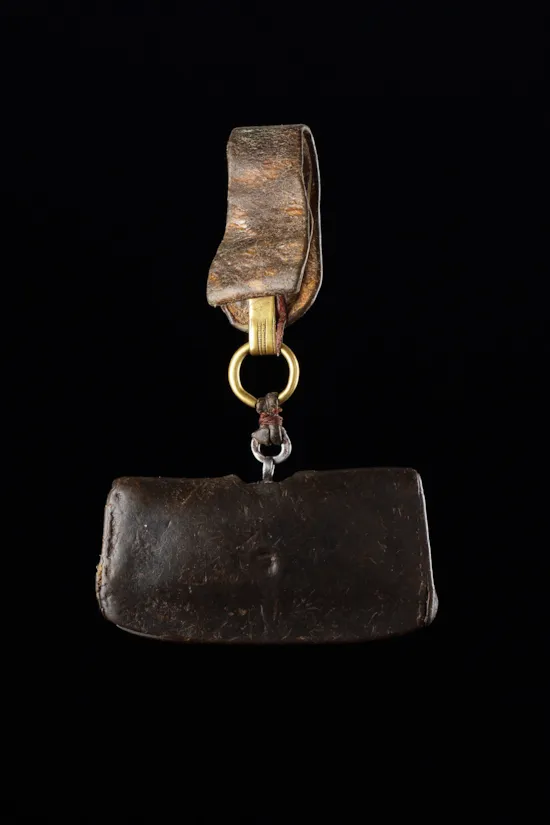
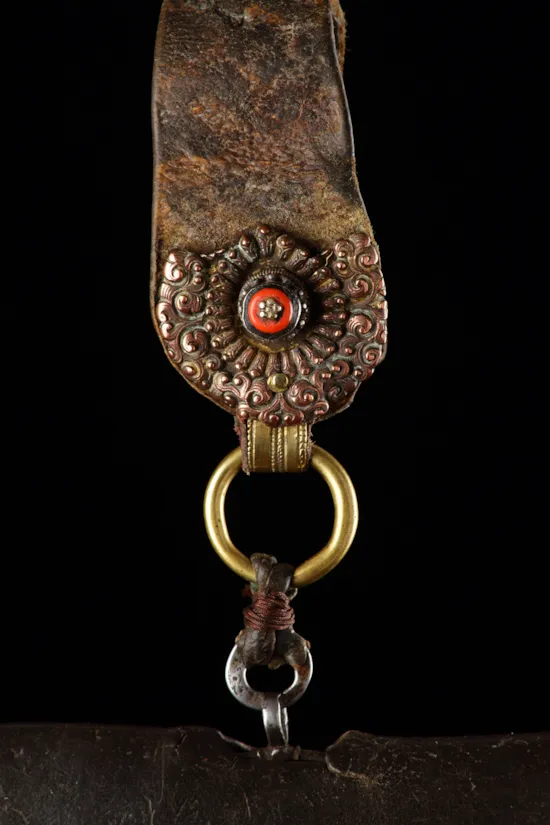
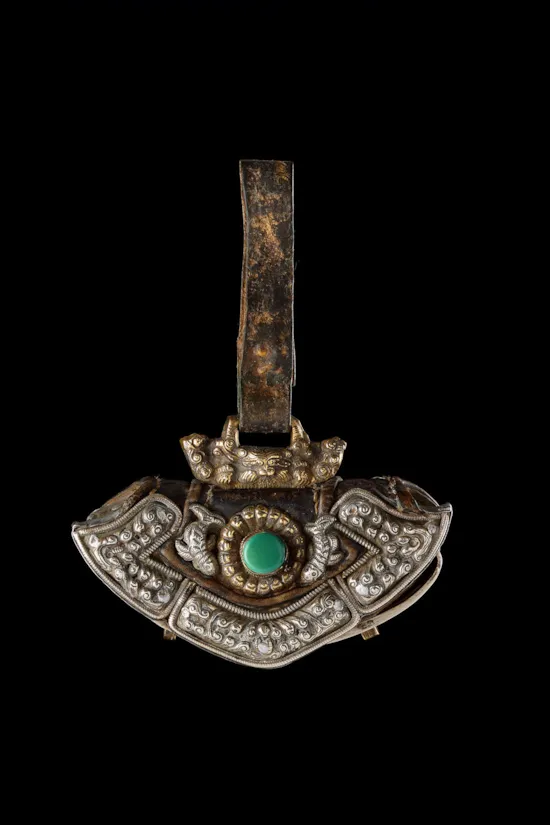
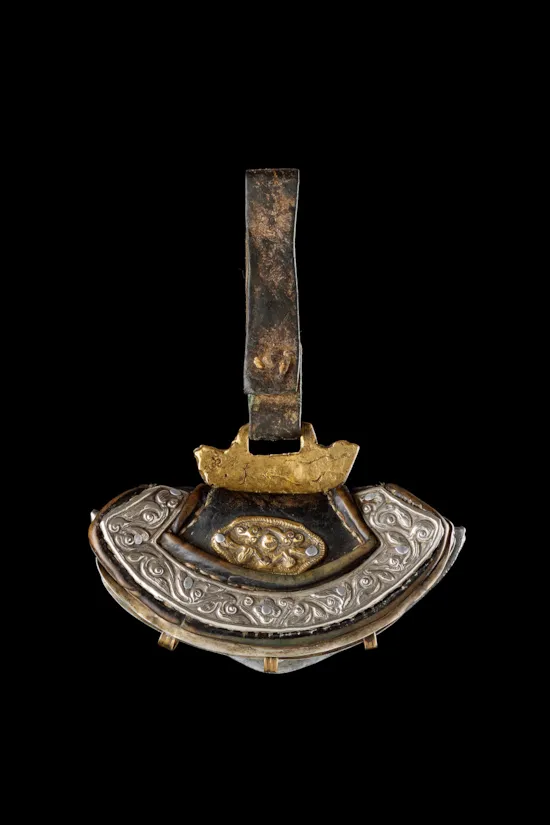
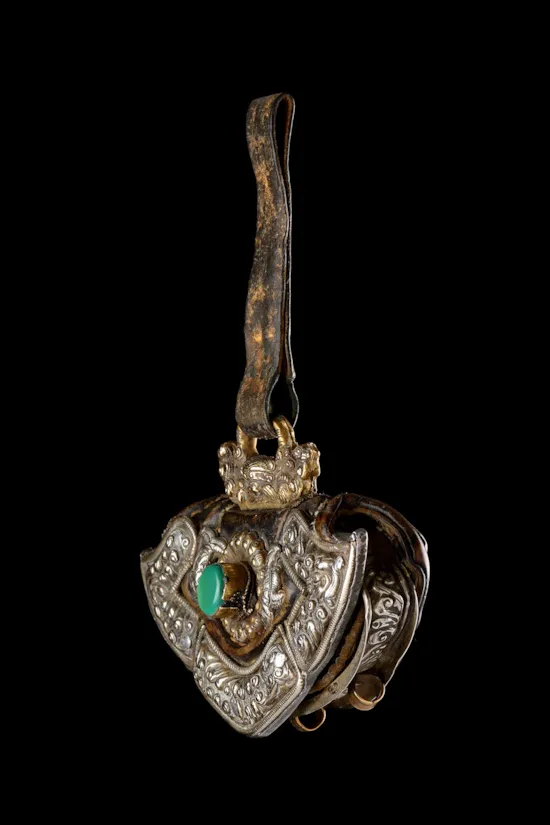
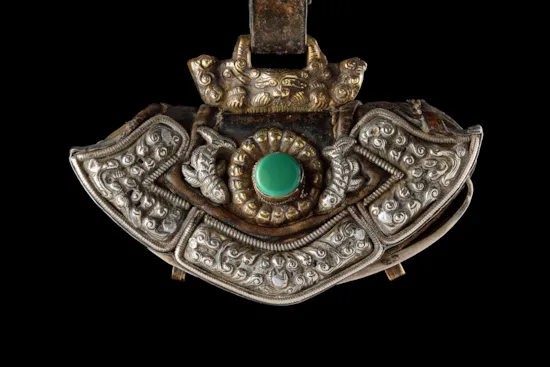
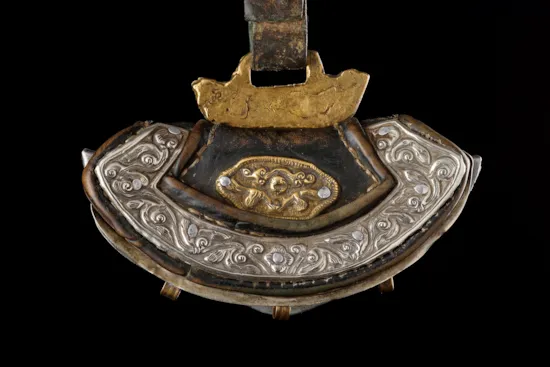
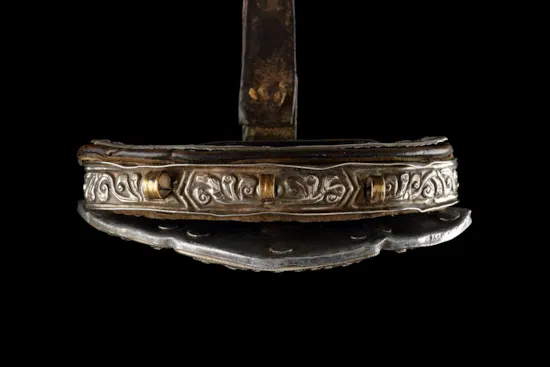










YOU MAY ALSO LIKE

